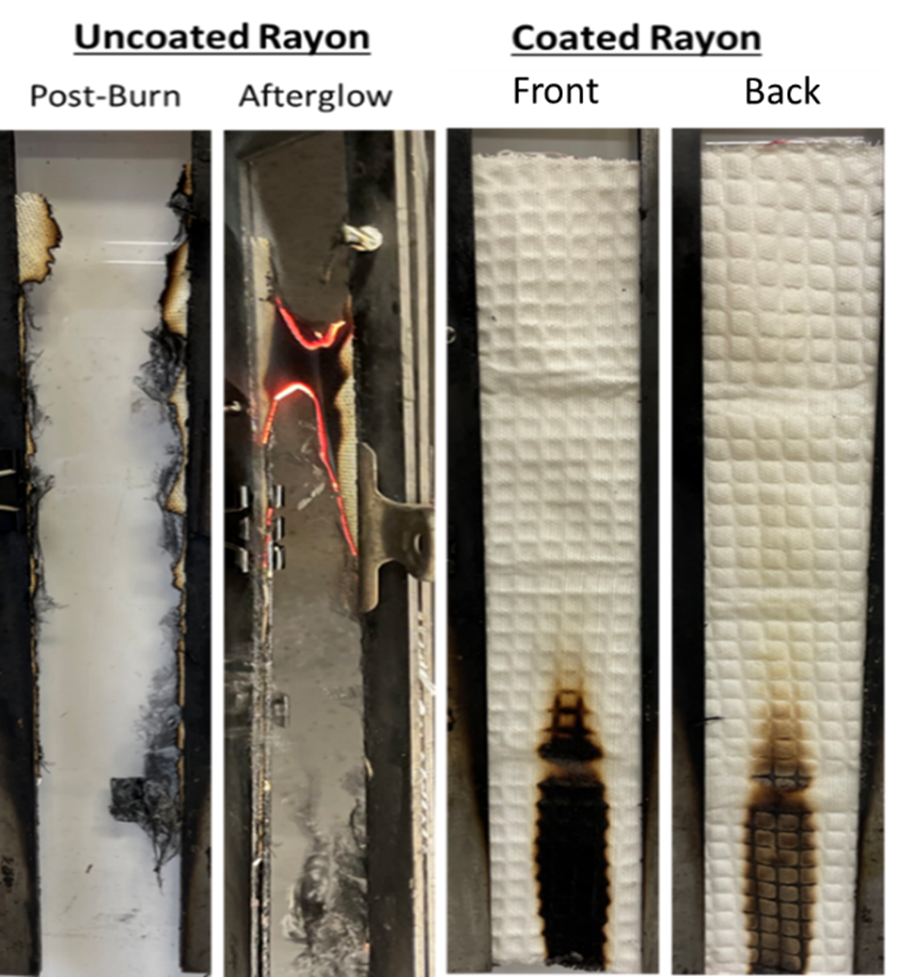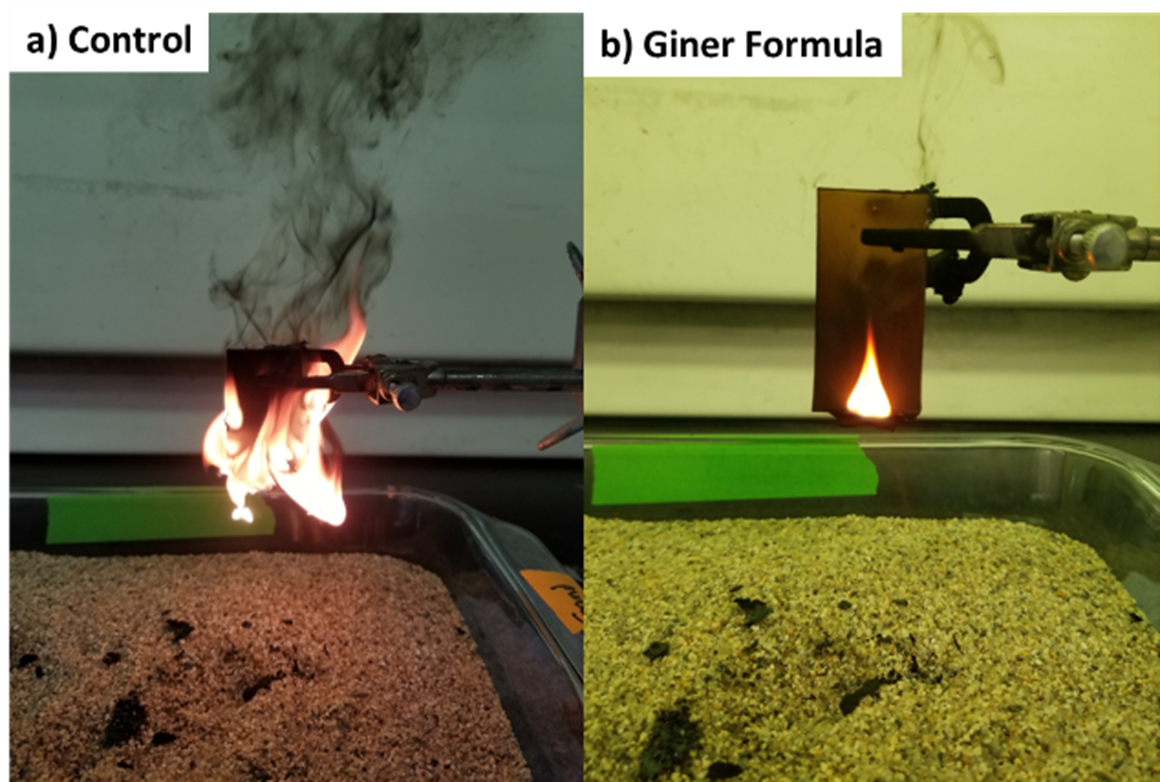Flame Retardant Textile Coatings
During intravehicular activity, astronauts work in an enriched oxygen environment (36% O2) which presents significant flammability risks. Traditional flame-retardant fabrics fail to provide sufficient flame retardancy in this enriched oxygen environment, or lack the desired comfort and durability. Through a NASA-funded program, Giner developed a unique spray-deposited flame-retardant coating that could be applied uniformly to natural, synthetic and blended textiles which exhibited self-extinguishing, intumescent behavior during vertical flame testing. Giner’s coated samples burn slower, consume less O2, and retain more weight.



Flame Retardant Composite Systems
Fiber-reinforced composite materials are used to manufacture structures for Navy ships, but these materials fail to meet the combination of flame, smoke, toxicity and strength requirements needed for marine vessels. Through a Navy funded program, Giner developed a novel fiber reinforced composite material with uncompromised mechanical properties and excellent flame retardant behavior. During flammability testing, baseline samples continue to burn even after the source of flame is removed, while Giner FRC samples extinguish within 10 seconds.
